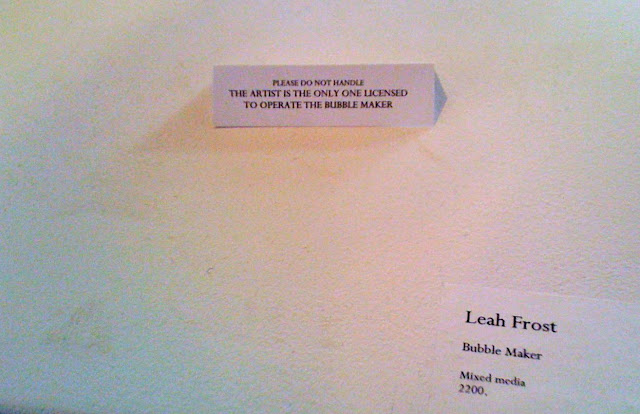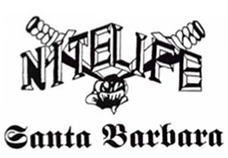Once I did some legal research on unincorporated associations. How do you know when you have one? Is your regular Friday night poker game an unincorporated association? (My aunt played poker with the same people for 50 years – surely that was an unincorporated association.) What about when members change, what happens then? When does one association become two?
Administrative Judges Bucher, Cataldo and Wolfson were probably thanking their lucky stars that the TTAB is a venue of limited jurisidiction so they didn’t have to figure it all out. Nitelife of Santa Barbara v. Nite Life Car Club Association is a hot mess, so much so that the Board admitted:
| We find that traditional concepts of priority, likelihood of confusion, first use dates, implied contracts, uncontrolled licensing, abandonment of the mark, etc., are of little help in resolving this dispute. |
Wow, that’s all the stuff it DIDN’T decide.
What we have is a car club – an unincorporated association – for low riders and antique cars that started in 1980 in Santa Barbara, named Nitelife of Santa Barbara. This group, the opposer, sponsored car shows, dances, and fund-raising events for community organizations. The logo was adopted in 1980:
The club used all SORTS of iterations of “Nite Life,” with and without the logo:
Here’s my personal favorite, the car club’s own ad that spells its name wrong:
In 2003 or 2004, one or more members of the Santa Barbara club decided to hold meetings in Ventura. As an unincorporated association, “Nite Life Car Club of Ventura County” got an Employee Identification Number (EIN) from the IRS, it had a seller’s permit issued by the Sales and Use Tax Department of the California State Board of Equalization, and member Edmundo Rosas was issued a fictitious business name statement for the name “Nite Life Car Club of Ventura County” and “Nite Life.” (Just to keep things interesting, the association filed the trademark application in dispute in the name of “Nite Life Car Club Association.”) There was conflicting evidence in the record about whether the Ventura members quit the Santa Barbara club.
The opposition is against the third effort to register the mark. The first attempt was an application filed by one of the members of the Santa Barbara club, Daniel Trejo (“not the Hollywood actor!” adds the TTAB), for the above crossed-swords logo. It was opposed by Mr. Rosas of the Ventura club; Mr. Trejo defaulted so the application was abandoned.
Then it was Ventura’s turn. The Ventura unincorporated association filed an application for the word mark “Nite Life” for “clothing sold only by the applicant’s association, namely . . . .” The application was opposed by Santa Barbara, but the opposition was dismissed for failure to prosecute and the mark registered.
Finally, Ventura filed a use-based application for the crossed-sword logo for apparel, claiming a first use date in 1980 (the date the Santa Barbara club first used the logo) :
This time Santa Barbara successfully opposed the application. I take the Board’s reasoning to be that the application failed because the applicant didn’t satisfy the requirements of 1(a), in particular that no other person have the right to use the mark, that the applicant have actual use of the mark, and that the first use date be accurate. But the Board had a lot to say about the whole situation:
| Applicant’s claiming 1980 as its first date of use of the applied-for mark is a literal impossibility. As documented in this record, applicant’s uses of the words NITELIFE and the crossed dagger logo a score of years later (and an equal number of years after opposer’s adoption) should not in any way create for applicant its own mark with its own first use date, i.e., ownership of this substantially identical source indicator. We find, on this record, as a matter of trademark law, that opposer, Nitelife of Santa Barbara, is the owner of, at the very least,11 the crossed dagger logo –- irrespective of applicant’s irrelevant charge that opposer cannot produce a copyright from the artist. Despite the fact that the Santa Barbara group adopted its mark in 1980 and has demonstrated continuous use since then, Edmundo Rosas has set up “Nite Life Car Club Ventura County” and litigates to wrest opposer’s ownership right away from the Santa Barbara group -– a group that has been decidedly less successful than the Ventura group in recent litigation before this tribunal.
In some filings herein, Mr. Rosas and his group seem to suggest that the Santa Barbara and Ventura groups are co-owners of these trademarks and service marks. Under this theory of ownership, Mr. Rosas apparently has concluded that the parties, together, could grow the organization by searching out more NITELIFE chapters across Central California, if not throughout the rest of these United States. However, when not arguing for a “live-and-let-live” attitude toward opposer, Mr. Rosas and his counsel have the temerity to claim exclusive use for the new Ventura group over these disputed marks, while denying such rights for their former compatriots in the Santa Barbara group.
In conclusion, we find that applicant is not the exclusive owner of the crossed dagger logo; that there is little credible evidence applicant ever used the applied-for mark for the identified goods;[*] and that applicant could not possibly have used its applied for mark as early as 1980. We do not reach the questions of priority/likelihood of confusion or whether applicant has intentionally offered material misrepresentations in its dealing with the United States Patent and Trademark Office or this Board.
11 As noted above, we are constrained by the presumptions afforded applicant under Section 7 of the Lanham Act in holding that opposer holds exclusive trademark rights to the words “Nite Life.” |
* Bonus text, by a clearly vexed Board: “Other than the application specimens, the record contains no documentary evidence of applicant’s bona fide use of the mark on clothing items in International Class 25. Moreover, in reviewing applicant’s responses to opposer’s discovery requests, this Board found itself as annoyed as was opposer with circuitous, run-on sentences of meaningless but turgid prose mashed into long, non-responsive answers.” Example here.
Hey, it’s a cool logo though.
Nitelife of Santa Barbara v Nite Life Car Club Ass’n, Opp. No. 91188462 (T.T.A.B. Sept. 30, 2010).
HT to John Welch at The TTABlog.

The text of this work is licensed under a Creative Commons Attribution-No Derivative Works 3.0 United States License.







